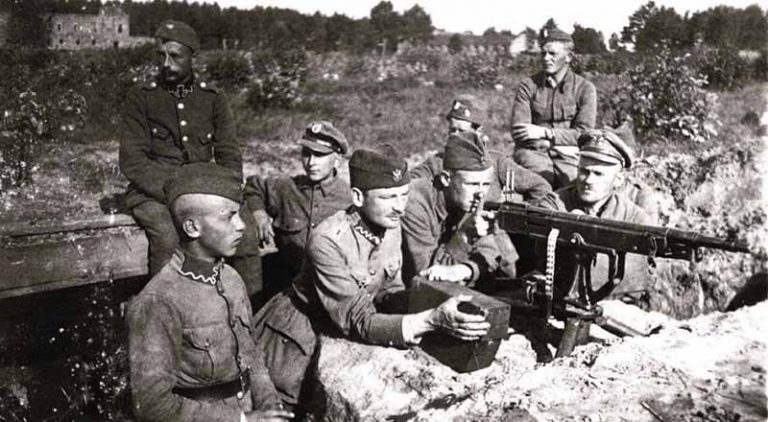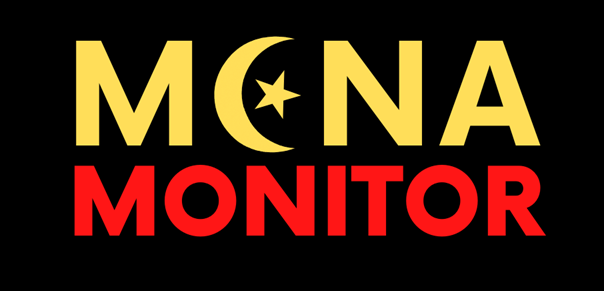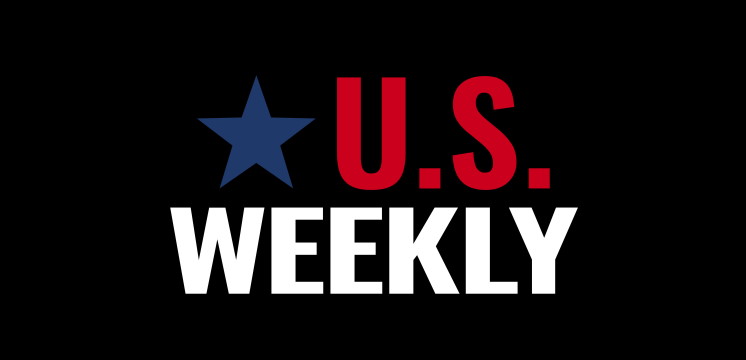
U.S. WEEKLY offers an in-depth analysis of various geopolitical processes that have direct effect on US’ domestic and foreign policies. This particular analytical column is possible thanks to the cooperation with polish media abroad: Dziennik Związkowy – Polish Daily News, Polishexpress of United Kingdom and WIrlandii.pl of Ireland
Date: 10 August 2020 Author: Rafał Zgorzelski
The Battle of Warsaw, 1920
Almost a hundred years ago, between August 12 and 15, 1920, one of the most significant battles in the history of the Republic of Poland took place on the outskirts of Warsaw, which was at the same time the greatest victory of Polish army since the time of John III’s victory of Vienna in 1683. Lord Edgar Vincent – 1st Viscount D’Abernon, a British politician, diplomat and writer, described it as “the eighteenth decisive battle in world history.” Nearby Warsaw, the Polish army not only defended the independence of the Polish State, reborn after more than 120 years of captivity, but also stopped the march of Bolshevik hordes on Europe. Just as the Battle of Warsaw was one of the most notable victories in the history of Poland, the Polish-Russian War of 1919–1920 was the first victory for Poles in several centuries.

November 11, 1918, was a joyful day for the citizens of Western countries and nations identifying themselves with Western civilization. On that day in Compiegne, a ceasefire on the Western front of the “Great War” was signed, with which the Poles hoped to regain their independence. The establishment of two competing blocks at its start – the Triple Alliance of Germany, Austria-Hungary and Italy, and the Triple Entente of France, Britain and Russia – created a situation in which the partitioning countries found themselves in opposite camps. The collapse of “white” Russia and the creation of the Bolshevik state on its ruins, towards which the West (mainly France, traditionally oriented towards Russia) had no obligations, keeping a reserve towards it, followed by the collapse of the Austro-Hungarian Empire and the defeat of Germany, created a situation that generations of Poles had been waiting for. Already during the war, the Polish question assumed an international character. Its prolongation exhausted the mobilization reserves of the participants in the conflict, especially the Central Powers, which suffered severe losses in the Battle of Verdun, France, lasting from February to December 1916. Solutions were sought to attract the Polish recruits, known for their valor. The parties to the conflict bid on the Polish question more out of necessity than out of conviction, outrivaling each other in promises to recreate (in various constellations) a “free Poland,” which they set as one of their war goals.
On January 22, 1917, the President of the United States, Thomas Woodrow Wilson, in a speech to the American Senate, stated that a united, independent and sovereign Poland should be reborn as a result of the war. On January 8, 1918, in the Fourteen Points statement to the US Congress, Wilson presented his peace program, in which he pointed out that as a result of the war an independent Polish state should be erected on the territories inhabited by indisputably Polish populations, with a free access to the sea and whose integrity should be guaranteed by international covenant. On April 6, 1917, the United States joined the war on the side of the Entente, and although it joined the military operations much later, its participation in this conflict was essentially decisive.
The Polish state was reborn not only as a result of a favorable turn of events on the international arena, but also as an effect of efforts, including the military one, of Poles themselves. The most beautiful chapters include the victorious Greater Poland uprising (Wielkopolska uprising) of 1918–1919, which was initiated by the return to Poland and visit to Poznań of Ignacy Jan Paderewski – the eminent pianist and ambassador of the Polish question in the United States, or the series of three Silesian Uprisings taking place from 1919 to 1921, which covered the territories of Upper Silesia region. The diplomatic activities of Polish politicians also deserve to be distinguished, especially those of the Polish National Committee in Paris and Roman Dmowski, who became the real minister of foreign affairs of a non-existent state.
Moving on to “red” Russia and its conflict with Poland. On November 15, 1917, the Bolsheviks issued the Declaration of the Rights of the Peoples of Russia, which assured the right of nations, including Poland, to self-determination. This document was in deep contradiction with the idea of Bolshevism, which aimed at the global revolution. The Social Democracy of the Kingdom of Poland and Lithuania was directly opposed to Polish independence. On August 29, 1918, the Bolsheviks issued a decree annulling the eighteenth-century partitions treaties, but this decree included the lands they had given to Germany (Congress Poland) and Austria-Hungary (Ukraine) with the Brest Treaty of March 3, 1918. After the defeat of Germany, Bolshevik Russia terminated the Brest Treaty, and the Red Army began its westward march to bring the flame of revolution to Europe. On January 1, 1919 the Byelorussian Soviet Socialist Republic was proclaimed in Minsk, five days later the Bolsheviks occupied Vilnius and formed the Lithuanian–Byelorussian Soviet Socialist Republic. In February 1919, General Stanisław Szeptycki initiated military action against them, and on April 19 of that year the Polish army entered Vilnius. At the conference held in Versailles from January 18, 1919, the Western Allies eagerly saw Poland fighting against the Bolsheviks whilst simultaneously they did not exaggeratedly opt for its expansion in the east, hoping to rebuild “white” Russia. Besides, they trusted that Poland would help in this. Admittedly, the Bolsheviks claimed that they intended to respect the demarcation line, yet at the same time they were preparing for the offensive through the “Smoleńsk Gate” in the north. Without waiting, on April 25, 1920, the Poles and the allied Ukrainians of Ataman Semen Petlura set off with an offensive in Ukraine and already on May 7, 1920, the not much intimidated Polish-Ukrainian army, under the command of General Edward Rydz-Śmigły, entered Kiev, which was welcomed with great enthusiasm in Poland, recalling the Kiev expedition of Boleslaw Chrobry from 1018. On the Bolsheviks’ side there was a full mobilization, even former tsarist officers, including the commander-in-chief of the tsarist army – General Alexei Bruselsov, were called to take part in the first “Great Patriotic War.” On May 15, 1920, the Bolsheviks began their offensive through the “Smolensk Gate” (a traditional route of attacks on Poland), and in the south (from Crimea) on June 5, struck Semyon Budyonny, whose army broke the front line two days later. On June 10, 1920, Poles left Kiev, and on July 4, 1920 on the north-western front started an offensive of Mikhail Tuchaczewski’s Red Army, which literally swept the Polish front line. On August 10, 1920, Polish troops left the line of Bug river, regrouping on the Wieprz and Vistula rivers. Soon the 4th Bolshevik army reached as far as Mława and Płock, which threatened to cut off the Polish forces. In the areas occupied by the Bolsheviks new authorities were being formed whilst Julian Marchlewski was announcing the establishment of the Polish Soviet Socialist Republic. Meanwhile, in the real, as the Bolsheviks used to say – “noble” Poland, there was a general mobilization of society, which spared no effort in donations to the State Protection Fund and to the army that was joined by volunteers in droves. Under pressure from the seemingly inevitable disaster, the Polish delegation went to Spa in Belgium, where a conference of representatives of Western countries was taking place, asking for support from the Entente. It was claimed that Poland is fighting not only for its own independence, but is also protecting Europe from the Bolshevik plague. Lloyd George, confident of the Bolsheviks’ victory, demanded that Władysław Grabski recognizes the so-called Curzon Line at Poland’s eastern border in exchange for mediation in the peace talks with “red” Russia. The Polish delegation succumbed to this pressure, which met with great criticism in the country. General Tadeusz Jordan Rozwadowski, who became Chief of the General Staff of the Polish Armed Forces on July 24, 1920, was also against the departure of the Polish delegation to Spa. On July 29, 1920, General Franciszek Latnik was put in command of the defense of Warsaw.
Support Us
If content prepared by Warsaw Institute team is useful for you, please support our actions. Donations from private persons are necessary for the continuation of our mission.
As for the Battle of Warsaw itself. The Polish command assumed the tying of the main forces of the Red Army near Warsaw and the counterattack from the Wieprz river. Moreover, as a consequence of the agreements made at Spa, a group of military instructors came to Poland from France with General Maxime Weygand, who essentially supported the Polish concept, although he recommended withdrawal from Lviv, which was opposed by General Rozwadowski, similarly to the proposal to evacuate Warsaw. The French played a vital role in the Battle of Warsaw, especially Colonel Baucilhon’s artillerymen. The Battle of Warsaw took place from August 12 to 15, 1920. The fiercest combats were fought for Radzymin, Ossów and Zielonka. Radzymin was reclaimed from the Poles by the Bolsheviks on August 13, yet a day later it was under Polish control again, after the rally of General Józef Haller and his chief of staff, Colonel Włodzimierz Zagórski, to be conquered by the Bolsheviks once more the next day. On August 15, it is once again taken back by Haller and Zagórski, both of whom personally led Polish troops to the attack. On the northern front, the 8th cavalry brigade of Colonel Włodzimierz Podhorski from the 5th Army of General Władysław Sikorski in a bold rally entered Ciechanów, where the command center of the 4th Red Army was completely destroyed. More importantly, the 203rd regiment captured the only radio station on which Tuchaczewski’s command of the army was based, thus excluding it from participating in the key battle of this war. On August 16, 1920, the Polish offensive, led by the head of state – Józef Piłsudski, was launched from Wieprz river and eradicated the Mozyr group of the Bolshevik army. Budyonny’s cavalry army also began to retreat to Volhynia, as did the Gaj-Chan’s cavalry corps. The retreat of the Bolsheviks turned into a panic escape. The most significant role in this battle was played by the 5th Army of General Władysław Sikorski on the section of Nasielsk on Wkra river and General Franciszek Latnik on the outskirts of Warsaw. The Bolsheviks were beaten again in the Battle of the Niemen River from September 20 to 26, 1920. The Battle of Warsaw took place near Warsaw and Modlin in addition to the area of Góra Kalwaria as well as between Modlin and Ciechanów. The sides of the battle included the 1st Polish Army (directly defending Warsaw) and the 5th Polish Army (in the area of Modlin) as well as the 3rd, 15th and 16th Bolshevik Armies. It was carried out on the basis of the operational order of August 10, 1920 marked with a fictitious number 10000, signed on August 9 by General Tadeusz Rozwadowski, who provided for a double wing maneuver, so-called “Cannae” maneuver. It is worth adding that it was also vital for the course of the battle that on August 13, Polish cryptologists deciphered the Bolshevik telegram, which indicated that the attack on Warsaw was planned shortly. The French General Weygand and his officers also played a major role in the battle, along with the supplies of weapons and ammunition, clothing, transport and communication equipment and the like from the West. The outcome of the battle was also influenced by the insubordination of Budyonny and Joseph Stalin, who instead of marching towards the Polish capital, ignored Tuchaczewski’s orders and headed to Lviv.
Writing about the Battle of Warsaw, one more interesting, although almost completely forgotten episode should be noted – the participation of American pilots in the Polish-Bolshevik war, and in fact the 7th Tadeusz Kościuszko Fighting Squadron, formed thanks to the support of Rozwadowski, on the initiative of Merian Caldwell Cooper, the commander of which became Major Cedric Fauntleroy whilst Cooper was appointed his deputy. The emblem of the American pilots located on the wings of the planes was, next to the white and red chessboard, a four-cornered “rogatywka” cap (worn by Kościuszko’s insurgents) and thirteen stars, symbolizing the colonies that formed the United States. The squadron of aviators may today become an element of the Polish-American brotherhood of arms, sanctified by the blood of Poles fighting for the independence of the United States and Americans fighting for the freedom of Poland. It is worth mentioning that American pilots fought against the 1st Cavalry Army of Semyon Budyonny and after the conclusion of the Polish – Bolshevik ceasefire they patrolled the eastern border, guarding it against the attack from “red” Russia. After the end of the war and returning to the United States, Cooper became a film producer – his greatest success being the 1933 movie “King Kong”.
A hundred years ago, Poles stopped the Bolshevik antichrist on the outskirts of Warsaw and this event permanently went down in history. The Battle of Warsaw, also known as the Miracle of the Vistula (a term coined by Stanisław Stroński), was one of the greatest Polish triumphs. Today, it could and should be an element connecting Poles, just like the memory of all the heroes of those days, authors of a great Polish success. The next anniversary of this battle, a centenary, is an excellent opportunity (the best possible one) to recall the Polish contribution to building the world heritage of Western civilization. Not Polish defeats, but Polish victories should be nurtured and raised at every opportunity as something not only to be remembered but also told to the world. Especially those which, like the Battle of Warsaw, were among the events “determining its history.”
This article was originally published on “Polish Daily News” and “Polish Express”.
_________________________________
All texts published by the Warsaw Institute Foundation may be disseminated on the condition that their origin is credited. Images may not be used without permission.

















